Abstract
1. A new method was used to diminish the autoxidation of GSH. 2. The oxidation of GSH by liver homogenates was studied with regard to concentration of homogenate, concentration of GSH, time, pH and anaerobiosis. 3. GSH was oxidized by recombinations of the supernatant with microsomes and with mitochondria. Each fraction alone caused little oxidation. 4. Proteins in the supernatant were required to obtain the effect, and low-molecular-weight compounds in the same fraction increased its effect. 5. GSH diminished the formation of malonaldehyde in homogenates. 6. GSH prevented a stimulating effect of the supernatant on the formation of malonaldehyde in microsomes and in mitochondria. 7. The malonaldehyde formation in microsomes together with the supernatant did not start until the concentration of endogenous low-molecular-weight thiols had decreased to a low level. 8. It is suggested that part of the oxidation of GSH in homogenates is coupled to a mechanism that counteracts the peroxidation of membrane lipids.
Full text
PDF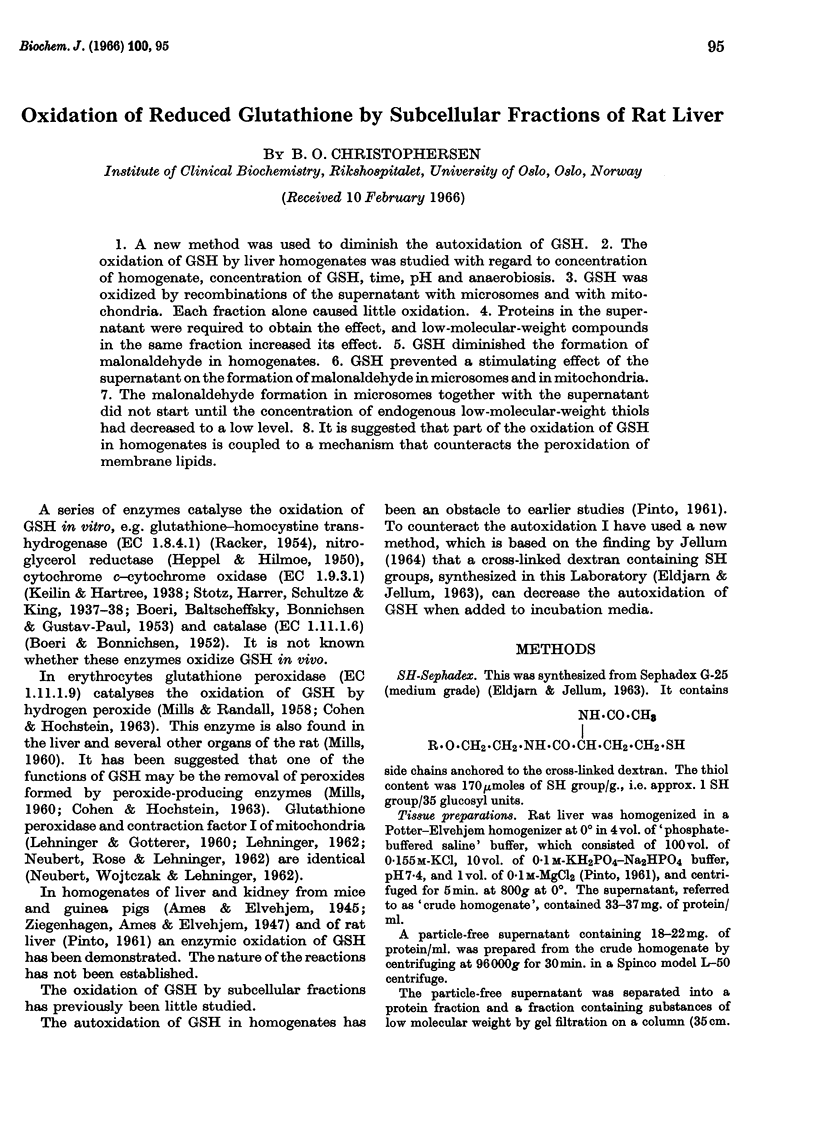
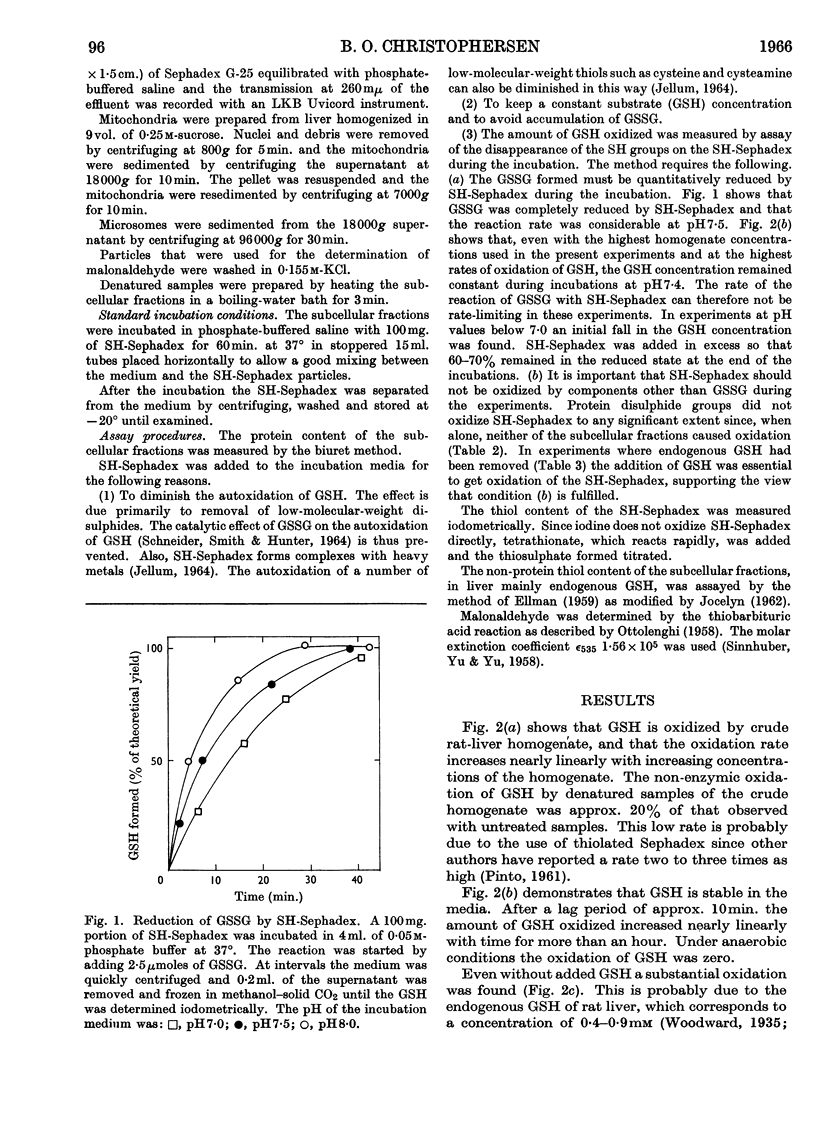
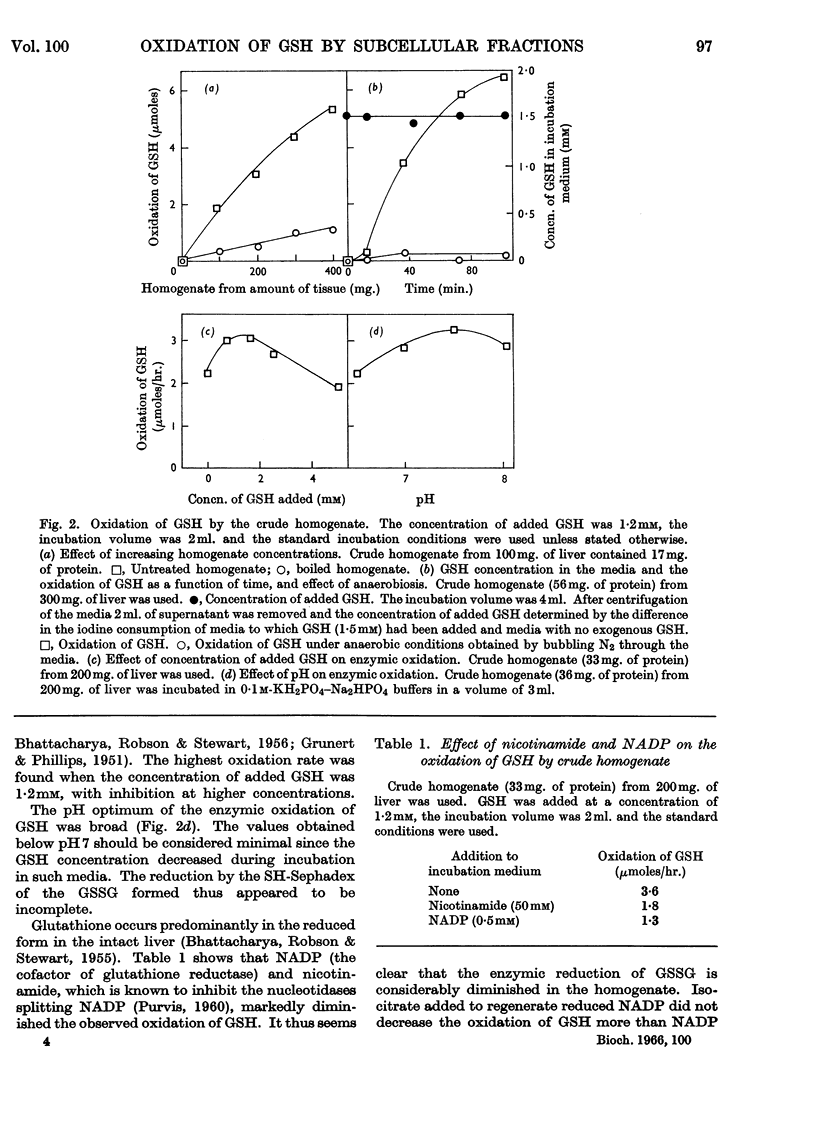
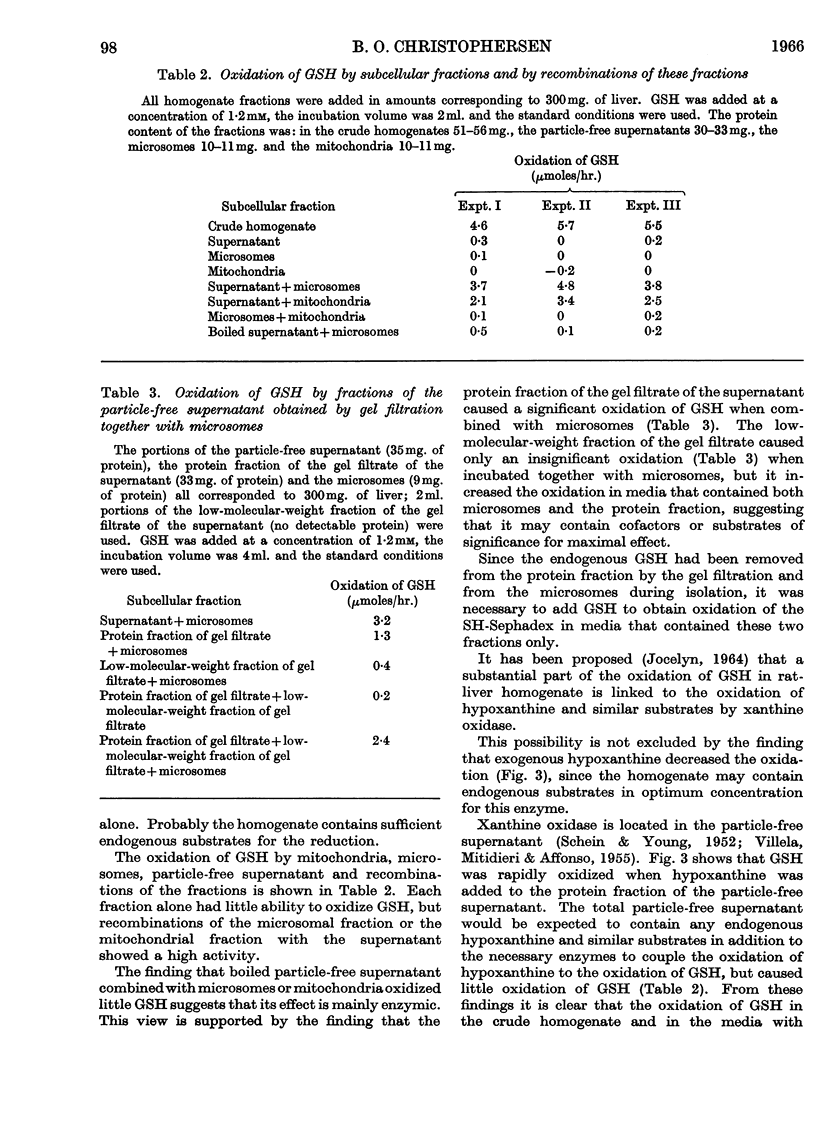
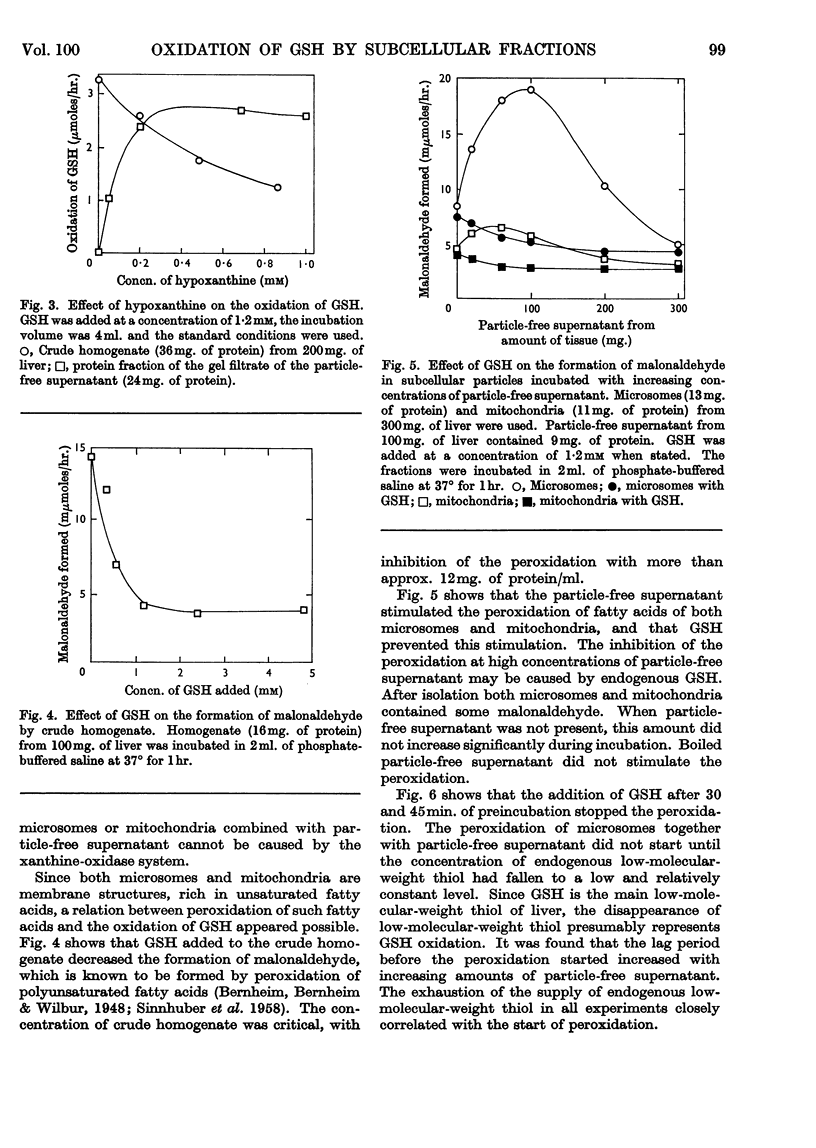
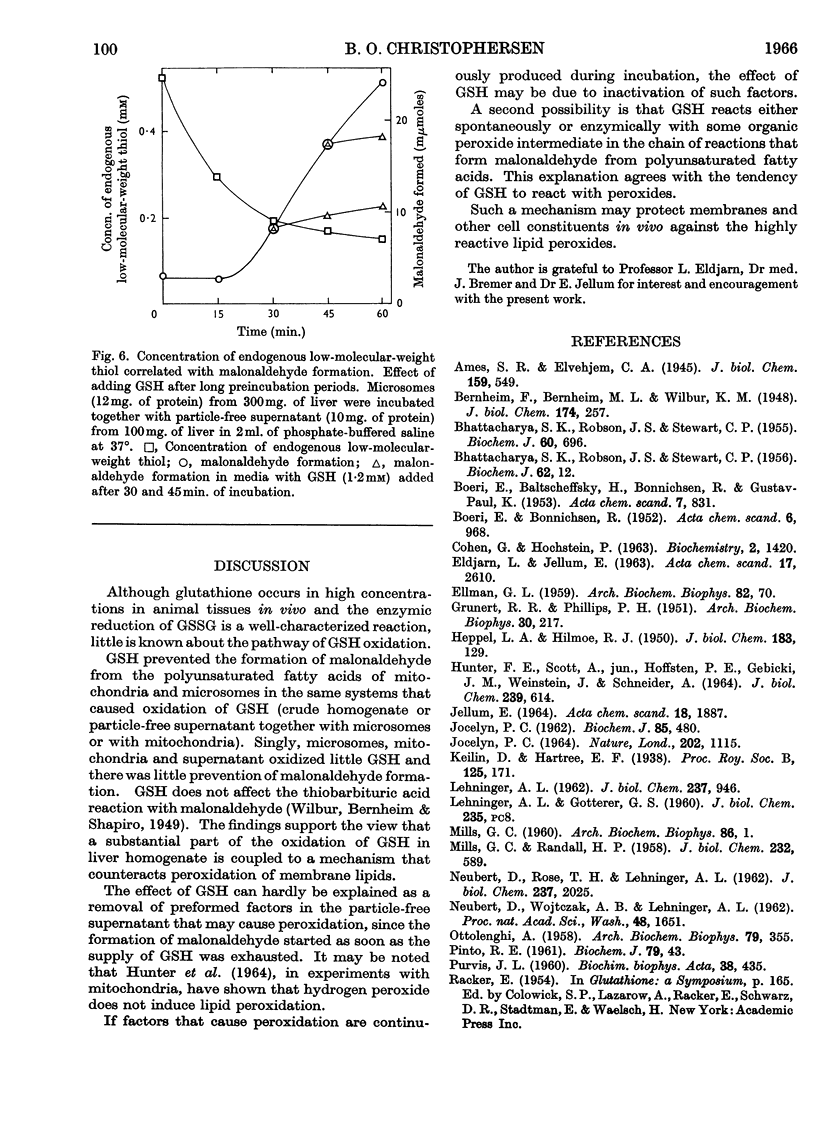

Selected References
These references are in PubMed. This may not be the complete list of references from this article.
- BHATTACHARYA S. K., ROBSON J. S., STEWART C. P. The determination of glutathione in blood and tissues. Biochem J. 1955 Aug;60(4):696–702. doi: 10.1042/bj0600696. [DOI] [PMC free article] [PubMed] [Google Scholar]
- BHATTACHARYA S. K., ROBSON J. S., STEWART C. P. The glutathione content of blood and tissues following alloxan and dehydroascorbic acid injections. Biochem J. 1956 Jan;62(1):12–21. doi: 10.1042/bj0620012. [DOI] [PMC free article] [PubMed] [Google Scholar]
- COHEN G., HOCHSTEIN P. GLUTATHIONE PEROXIDASE: THE PRIMARY AGENT FOR THE ELIMINATION OF HYDROGEN PEROXIDE IN ERYTHROCYTES. Biochemistry. 1963 Nov-Dec;2:1420–1428. doi: 10.1021/bi00906a038. [DOI] [PubMed] [Google Scholar]
- ELLMAN G. L. Tissue sulfhydryl groups. Arch Biochem Biophys. 1959 May;82(1):70–77. doi: 10.1016/0003-9861(59)90090-6. [DOI] [PubMed] [Google Scholar]
- GRUNERT R. R., PHILLIPS P. H. A modification of the nitroprusside method of analysis for glutathione. Arch Biochem. 1951 Feb;30(2):217–225. [PubMed] [Google Scholar]
- HUNTER F. E., Jr, SCOTT A., HOFFSTEN P. E., GEBICKI J. M., WEINSTEIN J., SCHNEIDER A. STUDIES ON THE MECHANISM OF SWELLING, LYSIS, AND DISTINTEGRATION OF ISOLATED LIVER MITOCHONDRIA EXPOSED TO MIXTURES OF OXIDIZED AND REDUCED GLUTATHIONE. J Biol Chem. 1964 Feb;239:614–621. [PubMed] [Google Scholar]
- JOCELYN P. C. OXIDATION OF GLUTATHIONE AND OTHER THIOLS BY THE XANTHINE OXIDASE AND HYPOXANTHINE OF RAT LIVER HOMOGENATES. Nature. 1964 Jun 13;202:1115–1115. doi: 10.1038/2021115a0. [DOI] [PubMed] [Google Scholar]
- JOCELYN P. C. The effect of glutathione on protein sulphydryl groups in rat-liver homogenates. Biochem J. 1962 Dec;85:480–485. doi: 10.1042/bj0850480. [DOI] [PMC free article] [PubMed] [Google Scholar]
- LEHNINGER A. L. A heat-labile factor required in extrusion of water from mitochondria. J Biol Chem. 1962 Mar;237:946–951. [PubMed] [Google Scholar]
- MILLS G. C. Glutathione peroxidase and the destruction of hydrogen peroxide in animal tissues. Arch Biochem Biophys. 1960 Jan;86:1–5. doi: 10.1016/0003-9861(60)90357-x. [DOI] [PubMed] [Google Scholar]
- MILLS G. C., RANDALL H. P. Hemoglobin catabolism. II. The protection of hemoglobin from oxidative breakdown in the intact erythrocyte. J Biol Chem. 1958 Jun;232(2):589–598. [PubMed] [Google Scholar]
- NEUBERT D., ROSE T. H., LEHNINGER A. L. Assay and cellular distribution of mitochondrial "contraction factor". J Biol Chem. 1962 Jun;237:2025–2031. [PubMed] [Google Scholar]
- NEUBERT D., WOJTCZAK A. B., LEHNINGER A. L. Purification and enzymatic identity of mitochondrial contraction-factors I and II. Proc Natl Acad Sci U S A. 1962 Sep 15;48:1651–1658. doi: 10.1073/pnas.48.9.1651. [DOI] [PMC free article] [PubMed] [Google Scholar]
- PINTO R. E. Comparison of the aerobic and anaerobic reduction of oxidized glutathione in liver homogenates. Biochem J. 1961 Apr;79:43–51. doi: 10.1042/bj0790043. [DOI] [PMC free article] [PubMed] [Google Scholar]
- PURVIS J. L. Pyridine nucleotides in rat-liver mitochondria. I. The demonstration of a new form of diphosphopyridine nucleotide and of triphosphopyridine nucleotide. Biochim Biophys Acta. 1960 Mar 11;38:435–446. doi: 10.1016/0006-3002(60)91279-8. [DOI] [PubMed] [Google Scholar]
- SCHNEIDER A. K., SMITH E. E., HUNTER F. E., Jr CORRELATION OF OXYGEN CONSUMPTION WITH SWELLING AND LIPID PEROXIDE FORMATION WHEN MITOCHONDRIA ARE TREATED WITH THE SWELLING-INDUCING AGENTS FE2+, GLUTATHIONE, ASCORBATE, OR PHOSPHATE. Biochemistry. 1964 Oct;3:1470–1477. doi: 10.1021/bi00898a014. [DOI] [PubMed] [Google Scholar]
- VILLELA G. G., MITIDIERI E., AFFONSO O. R. Intracellular distribution of xanthine oxidase in the rat liver. Nature. 1955 Jun 18;175(4468):1087–1087. doi: 10.1038/1751087a0. [DOI] [PubMed] [Google Scholar]
- WILBUR K. M., BERNHEIM F., SHAPIRO O. W. The thiobarbituric acid reagent as a test for the oxidation of unsaturated fatty acids by various agents. Arch Biochem. 1949 Dec;24(2):305–313. [PubMed] [Google Scholar]


